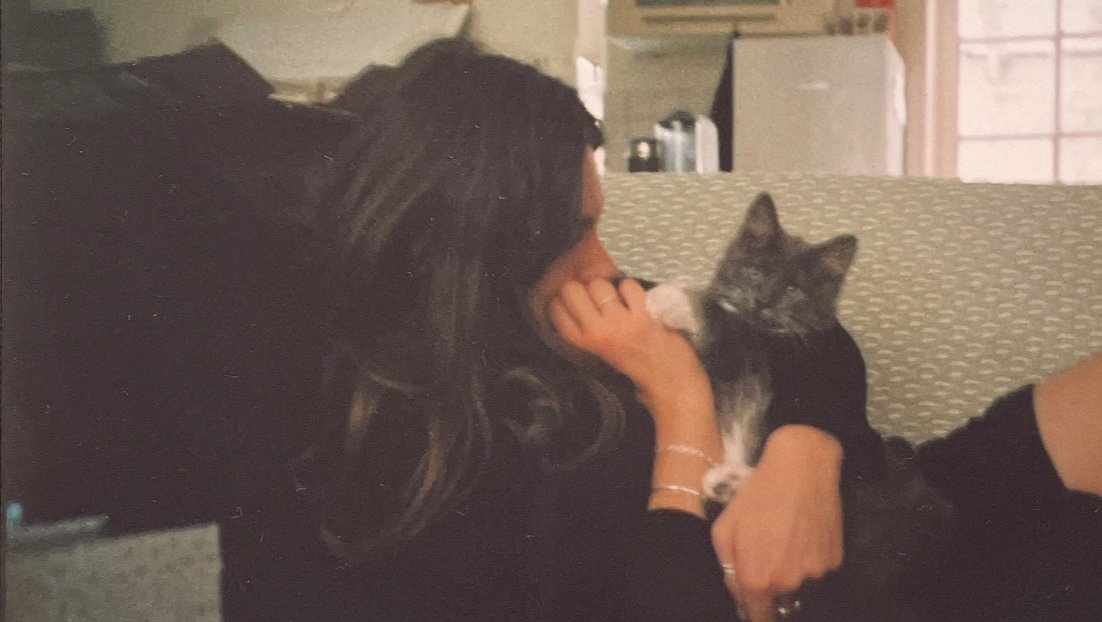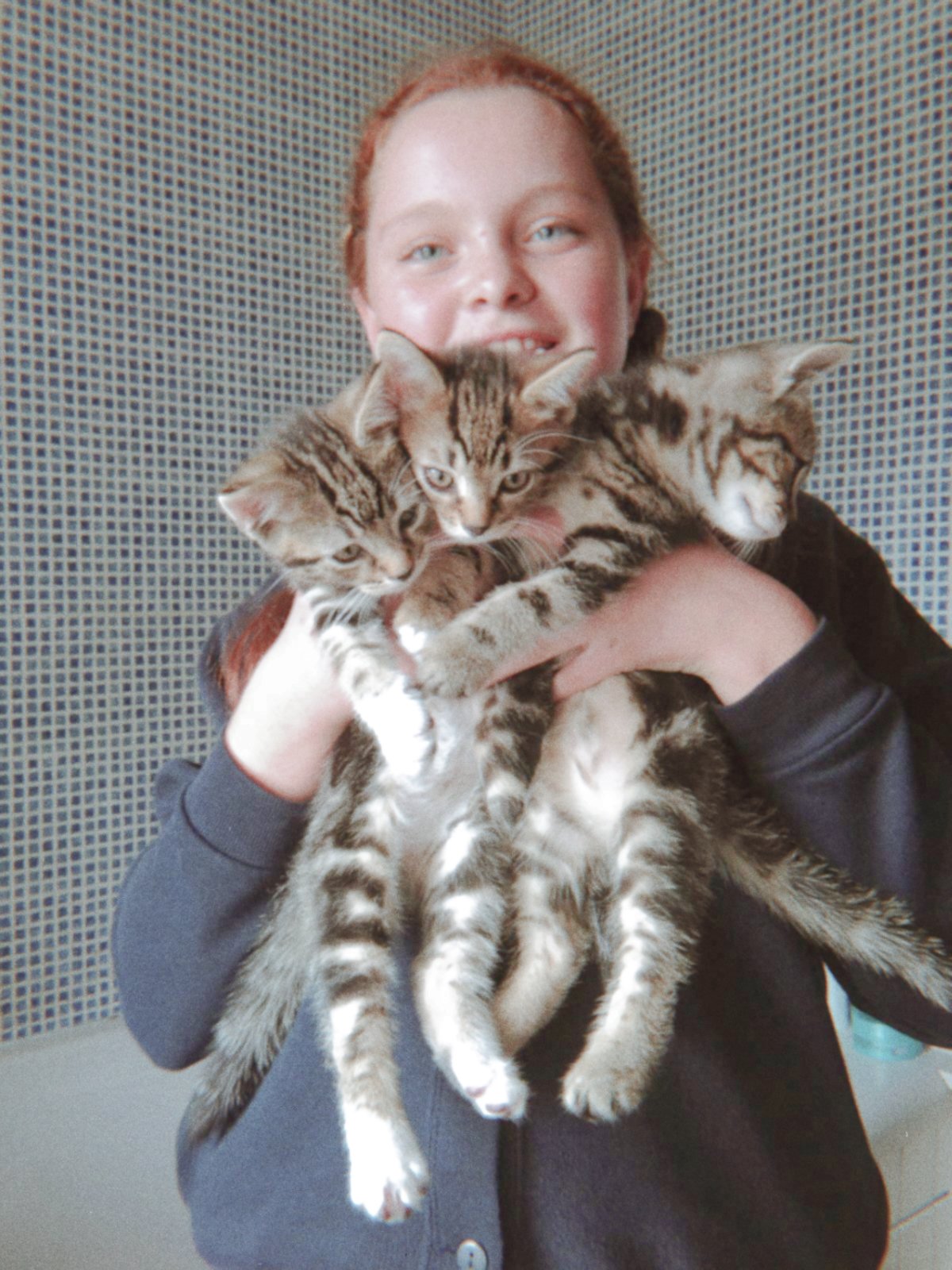The Benefits of Raising Children around Pets
For many of us, pets are a massive part of our lives. To those of us without children, we often see our pets as being our babies, before having actual babies! For us our beloved pets mean the world to us, but we have very different experiences with pets growing up. Maisie grew up with every animal under the sun in my house, including a micropig … dont ask. Whereas Rebecca’s family only decided to get pet guinea pigs when Rebecca and her sister were 6 and 8. Despite having very different experiences with pets growing up, we both adore having our own dogs and Maisie has made buying a new cat an annual event!
Not having pets growing up will not be of any disadvantage to a child. It doesn’t suit every family having a pet as they are a massive commitment and require a lot of your time, love and money. But if you are lucky enough to provide a pet with a loving home your children will benefit massively in a variety of ways. When we say pet most people automatically think of a dog or a cat. Whilst these are the more traditional family pets, even having a low maintenance pet like a fish can teach children a magnitude of lessons that they can carry into adulthood.
Responsibility
You can use pets to teach your children responsibility. Now we don’t mean buy a cat and hand it over to your young child and tell them to ‘keep it alive’. Responsibility can be taught with giving your child small tasks to do for the pet. Explain to your child that one of the jobs relating to the pet is now their responsibility. Don’t assign them a job that is going to be difficult or dangerous such as cleaning the cat litter box or walking the dog alone. Give them something simple to do such as giving the pet fresh water everyday or brushing the cat. Keep in mind the child’s age. Giving a three-year-old the job of feeding the dog will be overwhelming for them and possibly unsafe as young child tend to stick their fingers in their mouths a lot. Equally giving children too many responsibilities at a young age could cause the child to become overwhelmed and possibly resent the pet. As the child gets older and they grow more confident with the pet and become more emotionally invested, you can increase the amount of responsibilities they have for the animal.
I’m sure a lot of you with children, but no pets ,have experienced the never ending nag for your family to get a pet. Before making the leap, sit your child down and explain to them what responsibilities come with having a pet. You can even help them to compile a list of what these responsibilities are and delegate roles within the family. Again, remember to account for the age of your child when assigning responsibilities to them and know that despite your child promising the world, when it comes to doing their task everyday there will be some resistance at times. As the adult it is ultimately your responsibility to look after the pet so don’t buy an animal unless you are willing to care for it yourself. Children are children at the end of the day, we can’t expect them to have fully understood what it takes to care for an animal if they have never had to do it before.
Respect and empathy
Following on from the idea that a pet gives a child a sense of responsibility, this act of caring for a pet helps a child to develop empathy for the animal and learn how to nurture them. Having a pet in the house helps children to learn that just like them, their pet experiences hunger, thirst, exhaustion, happiness, anxiety and excitement. It can also teach them that like humans, some animals don’t like loud noises and can become overwhelmed and scared. Having a pet can also help children to learn boundaries. If for example you have a dog, if a child is constantly trying to get in its face and pick it up whilst it’s trying to sleep, the dog will inevitably show signs of being annoyed and frustrated. This will teach children to respect the pets boundaries and learn that the dog has feelings of its own.
Communicative skills
Pets can help children to develop non-verbal communicative skills and how to read animals. We all know pets can’t talk, as much as we wish they could! But despite this, we all know how to read different cues from our pets. For example Maisie’s cat Banksy makes a very cute chirping sound when he wants a cuddle and Becky’s dog Oatie will do a very distinct high pitch bark when he wants someone to get a toy out of his basket for him (even though he is very capable of picking it out himself, he’s a bit of a princess!). A lot of the time pets will also use non-verbal cues to communicate things. Becky’s dog Oatie will give you a specific look when he is warning you that he is feeling nervous and on edge which is our cue to walk away so we don’t get bitten! Maisie’s cat Sunday does a very similar thing when he has had enough of being stroked. His ears go back and he twists his head slightly as a warning that if you were to carry on he is going to give you a nip! Learning how to read non-verbal cues is an essential skill for children to develop when interacting with both animals and other people. Not only is it important for safety reasons when children are around animals, but it is also an important social skill to have when interacting out in the real world.
In the early years especially, having a pet around the house is excellent for the development of language skills in children. Pets provide an engaging and patient audience for a baby learning to verbally communicate. As children grow they often tend to talk to their pets about their worries and fears as they know their pet won’t show any judgment or relay the information to someone else. Having a pet within the household can also promote communication between a child and caregiver. A caregiver may talk to their child about the pet or encourage their child to speculate what the pet is thinking or feeling in any given moment.
Life cycles
For most children, the death of a beloved pet will be their first experience of death. A child’s limited knowledge and experience of the concept of mortality usually means children do not comprehend that death is permanent and irreversible. Loosing a pet opens up the conversation of loss and allows us to teach our children about the cycle of life. Whilst loosing a pet is a truly devastating event whatever age you are, experiencing this within early childhood can help positively set a child up for any future losses as it teaches them they will survive the grieving process and that although they are gone we still have our memories of them. A good tip for helping your child navigate the death of a pet is to create a memory box that they can look through when they are feeling sad. Turn their grief into something positive and remind your child that their pet loved them and they loved their pet. Encourage them to talk about their feelings and reassure them that what they are feeling is perfectly normal. Even if you don’t deem the death of the pet to be of particular significance eg. a pet goldfish, remember that this is likely your child’s first experience of death and allow them to grieve for as long as they need to.
Motor skills
Bigger pet such as dogs and even cats will have a lot of energy, especially when they are young. For children pets can be an excellent way to get them moving and interacting. Don’t leave a child unsupervised with a pet, no matter how friendly they are, but if your pet can tolerate some rough and tumble from your kids, let them roll around together! Let them explore the world together whether that be crawling, jumping or swimming together. Pets are also a great way for children to learn unstructured play.
Therapeutic benefits
Interacting with pets opens up a whole new sensory world for children. They can explore the feeling of the pets fur, watch how they walk around and play and get to know every inch of their animal through touch. For some children, the sensory aspect of pets isn’t only about exploration but can also have a therapeutic aspect to it. A lot of animals are used in therapeutic treatment. Simply touching the animal can bring some people comfort and make them feel relaxed but some people prefer what is called ‘deep pressure therapy’. ‘Deep pressure therapy’ refers to a process whereby the body weight of an animal laying on you activates the parasympathetic nervous system which helps to reduce anxiety associated with the fight and flight system. We know first hand that pets are a great source of comfort when we are feeling anxious, stressed or simply just down. We recommend borrowing Maisie’s kitten Darwin for a cuddle when you need a ‘pick me up’. Being a ragdoll, Darwin moulds to the shape of you when she lays on your chest and gives the most comforting hug!


















